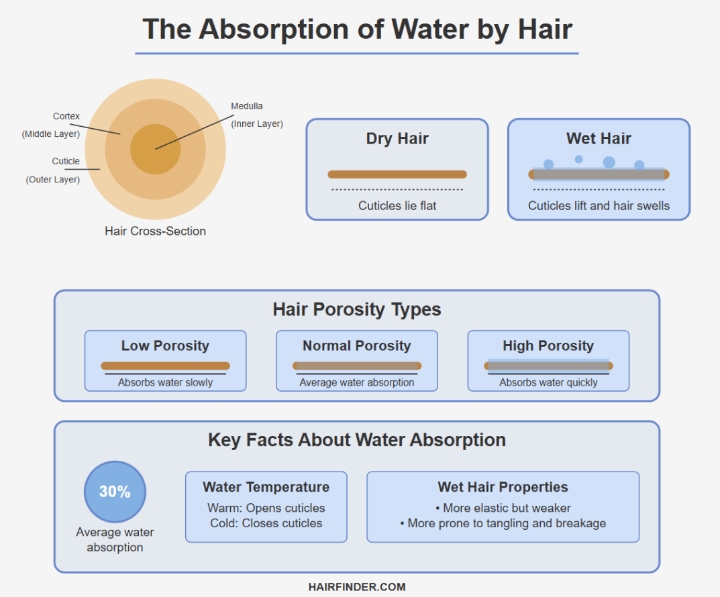The Absorption of Water by Hair

A: Yes, hair absorbs water. The water doesn't just stay on the surface of the hair to evaporate later. There's much more happening, and most people are insufficiently aware of this.
The structure of the hair fiber allows water to penetrate during washing or exposure to humid environments and rain. The outer layer of the hair, the cuticle, consists of overlapping scales that can open. These scales resemble shingles and allow water molecules to enter the hair and reach the inner layers.
Hair porosity is crucial in determining its water-absorbing capabilities and is categorized into three types: low porosity, normal porosity, and high porosity. Hair with low porosity has a more closed outer layer, providing more resistance to water absorption. It will absorb water more slowly and less compared to other hair types. Hair with normal porosity has a more balanced outer layer, allowing it to absorb and retain an average amount of moisture. Hair with high porosity has a more open outer layer, making it prone to absorbing water quickly and in larger quantities. However, it may struggle to retain that moisture.
The water temperature during hair washing plays a significant role. Warm water helps to open the hair cuticles, facilitating water absorption and ensuring a more thorough hair cleaning. However, extremely hot water can strip the hair of its natural oils, leading to dryness. Conversely, cold water tends to close the cuticles, creating a smoother surface but limiting the amount of water absorption.

However, when hair becomes wet, it swells. The water penetrates the outer layer, causing the scales to lift, and the hair starts to swell. This swelling is a natural and reversible process. But, as the scales lift, the middle layer of the hair, the cortex, is exposed. And when this middle layer is exposed, the hair becomes more vulnerable. Some degree of swelling is necessary for effective hair cleaning, but excessive swelling can be problematic.

Wet hair is also more elastic than dry hair. While elasticity is a desirable quality because it allows the hair to stretch and bounce back, excessive stretching can lead to damage. Wet hair can be stretched beyond its normal limit, making it more prone to breakage, especially during activities like combing or brushing.
©Hairfinder.com
See also:
What exactly is hair made of and how does it grow?
What is keratin in our hair and what is it good for?